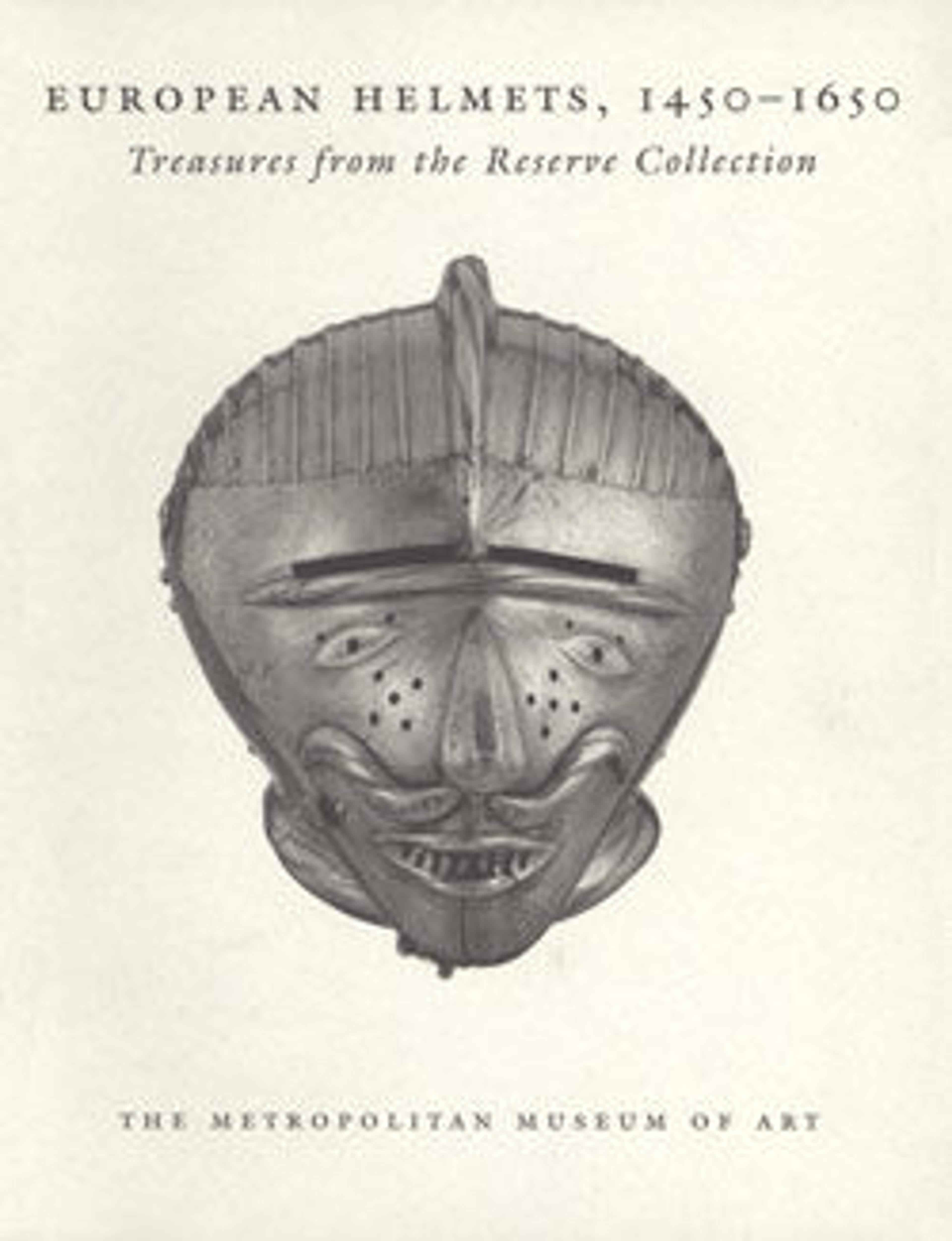Spider Helmet
One of the most bizarre head defenses ever designed, the so-called spider helmet takes its name from the arrangement of narrow bars hinged around the rim of the domed bowl and projecting peak recalling the legs radiating from a spider's body. The hanging bars encircled the head and offered protection against cutting blows from swords. When not in use, the bars were folded up and their ends fitted beneath the spring-held disk at the apex. A turn of the screw at the front released the spring, causing the disk to pop up and the bars to fall into place. The bowl retains its padded lining.
Artwork Details
- Title: Spider Helmet
- Date: ca. 1650–1700
- Culture: British or French
- Medium: Steel, pigment, textile
- Dimensions: H. including legs 14 3/4 in. (37.5 cm); H. excluding legs 7 in. (17.8 cm); W. 9 1/4 in. (23.5 cm); D. 12 in. (30.5 cm); Wt. 4 lb. 11 oz. (2152 g)
- Classification: Helmets
- Credit Line: Gift of William H. Riggs, 1913
- Object Number: 14.25.523
- Curatorial Department: Arms and Armor
More Artwork
Research Resources
The Met provides unparalleled resources for research and welcomes an international community of students and scholars. The Met's Open Access API is where creators and researchers can connect to the The Met collection. Open Access data and public domain images are available for unrestricted commercial and noncommercial use without permission or fee.
To request images under copyright and other restrictions, please use this Image Request form.
Feedback
We continue to research and examine historical and cultural context for objects in The Met collection. If you have comments or questions about this object record, please complete and submit this form. The Museum looks forward to receiving your comments.
